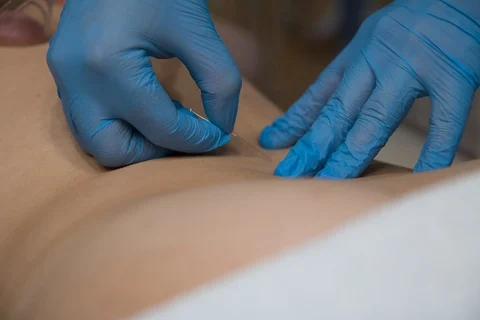
Dry needling is one of the most common procedures used in physical therapy aimed at controlling and alleviating pain.
In terms of advantages, there are numerous of them, however, one of the major questions that a potential patient is going to have is whether this procedure is painful or not.
These points can also contribute to responding to some of the mentioned concerns about what to expect during a dry needling session, the sensations there, and how to deal with the discomfort properly.
What to Expect During a Dry Needling Session
Dry needling is a process in which a qualified healthcare professional inserts filiform needles into the myofascial trigger points within the muscle.
It also describes specific zones, which are usually tense or knotted muscle tissue that leads to pain and restricted motion. It is a method of inactivating these points and decreasing pain in an effort to enhance the muscles’ performance. As a first step in the actual treatment session, the practitioner performs an evaluation to determine which of trigger points are to be addressed during the treatment session.
The patient is often told to lie down or sit in a comfortable position, and the test takes up to 30 minutes.
The practitioner also uses aseptic procedures to clean the skin and then they proceed to place the needles into the correct trigger points. The needles are generally retained in the patient’s body for a few minutes in order to achieve therapeutic purposes.
Sensations Experienced During Dry Needling
Pain sensations that a person may feel during the application of dry needling may differ from one individual to another.
Some patients described that it takes only a moment to insert the needle, and at times, they may feel a prick-like feeling that belongs to a mosquito bite. Sometimes, if the needle gets to the trigger point, an immediate local twitch response, which is a temporary contraction of the muscle, may occur.
This twitch contraction is commonly succeeded by a deep pain or cramp like feeling which disappears after a short while. A patient may also feel pressure in the muscle or a full feeling as the needle lengthens the muscle it is working on.
These are normally transitory and help the clinician to confirm that the treatment is being delivered in the appropriate location.
Pain Levels and Discomfort
Dry needling results in mild pain and discomfort that vary depending on the patient’s tolerance level to pain.
Many patients refer to the perceptions as moderate to mild and say they can endure them. The first insertion of the needle is usually the most severe; however, the sensation is much more distinct than that experienced when getting an injection or drawing blood.
The extent of the discomfort depends on the location of these points and the threshold of pain experienced by a particular person.
Often, those muscles that are more sensitive or have a higher initial level of tension, for example, will respond greater to the needling. However, this discomfort is normally only for a short time and passes when the needle is taken out.
Managing Pain and Discomfort During the Procedure
Several methods can be applied to deal with pain and discomfort during a dry needling session. When inserting the needle, the depth and angle may be changed to reduce the discomfort the patient may feel.
It is also advisable to hold the skin taut before or after needling through gentle pinching or massaging to minimise the pain.
It is also important that the client is able to discuss their level of comfort concerning the chosen practitioner.
Some patients may find the process uncomfortable or painful; you should inform the practitioner if the situation is severe to prevent the administered treatment from worsening the pain.
Other preventive measures involve the reduction of any level of anxiety or discomfort involved in the procedure through general relaxation that includes deep breathing and emphasising positive thoughts.
Rama Care’s Approach to Dry Needling
Comfort and reduction of pain are well valued at Rama Care and this makes us take appropriate action on any of our patients experiencing pain.
At our clinic, our practitioners are very experienced and ensure the patient is understood individually for the treatment by dry needling. This is followed by an initial consultation to determine and comprehend the client’s requirements before commencing with the therapy.
During the process, constant discussion is maintained, and attempts are made to modify the approaches in order to avoid pain and discomfort.
Essentially, the intended means serve the purpose of ensuring that relief is achieved and that the entire experience is comfortable and supportive.
- Tags:
- is dry needling painful
